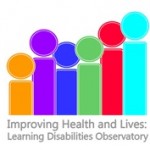
Improving Health and Lives, the learning disabilities public health observatory was set up in April 2010 following the publication of the Michael report. It exists to help understand the experience of people with learning disabilities and to produce evidence aimed at bringing about improvements.
The annual report looks at information collected by government departments. IHAL authors estimate how many people with learning disabilities there are in England and summarise a range of information on health, education and the use of health and social care services by people with learning disabilities.
The report publishes a range of figures from official government reports, among which are:
- 1,191,000 people with learning disabilities whom 189,000 adults (21%) are known to learning disabilities services.
- Median age at death for people with learning disabilities is 25 years younger than for the general population
- Less than 50% of eligible adults received a health check in 2010/11.
- 2,055 admissions of people with learning disabilities for the psychiatric care
- 200,000 children with a primary Special Educational Need (SEN) associated with learning disabilities.
- Of 138,995 adults with learning disabilities reported by local authorities to be in some form of accommodation 41, 205 lived permanently with family or friends (29.6%).
- Expenditure on residential services
- residential care placements (£1.55 billion),
- supported and other accommodation (£483 million)
- nursing care (£75 million).
- Supporting People expenditure £149 million.
- 42,625 adults with learning disabilitie were using direct payments or self directed support, an 81% increase from 2009/10.
- 6.6% of adults with learning disabilities were reported to be in some form of paid employment.
- 20,165 alerts concerning adults with learning disabilities were reported in 2010/2011, 22% of the total number of alerts recorded by local authorities.
- 712 applications (54%) for DoLS were granted, a similar proportion to those granted concerning other adults.
- In the quarter ending May 2011 380,250 adults with learning disabilities were receiving Disability Living Allowance;
1,700 people were claiming Attendance Allowance. - The number of carers receiving assessments/reviews increased by 3%
- 75% of carers of an adult with learning disabilities had been caring for more than 20 years.
The authors point out that most of the data tell us things about service use and activity, but little about quality or user experience, but welcome the work to introduce an outcomes framework for the NHS public health and social care and they hope in future editions to be able to include information on
the actual outcomes of service use as experienced by children and adults with learning disabilities and their carers.
You can read the full report here: People with Learning Disabilities in England 2011, Emerson E et al., IHAL 2012
